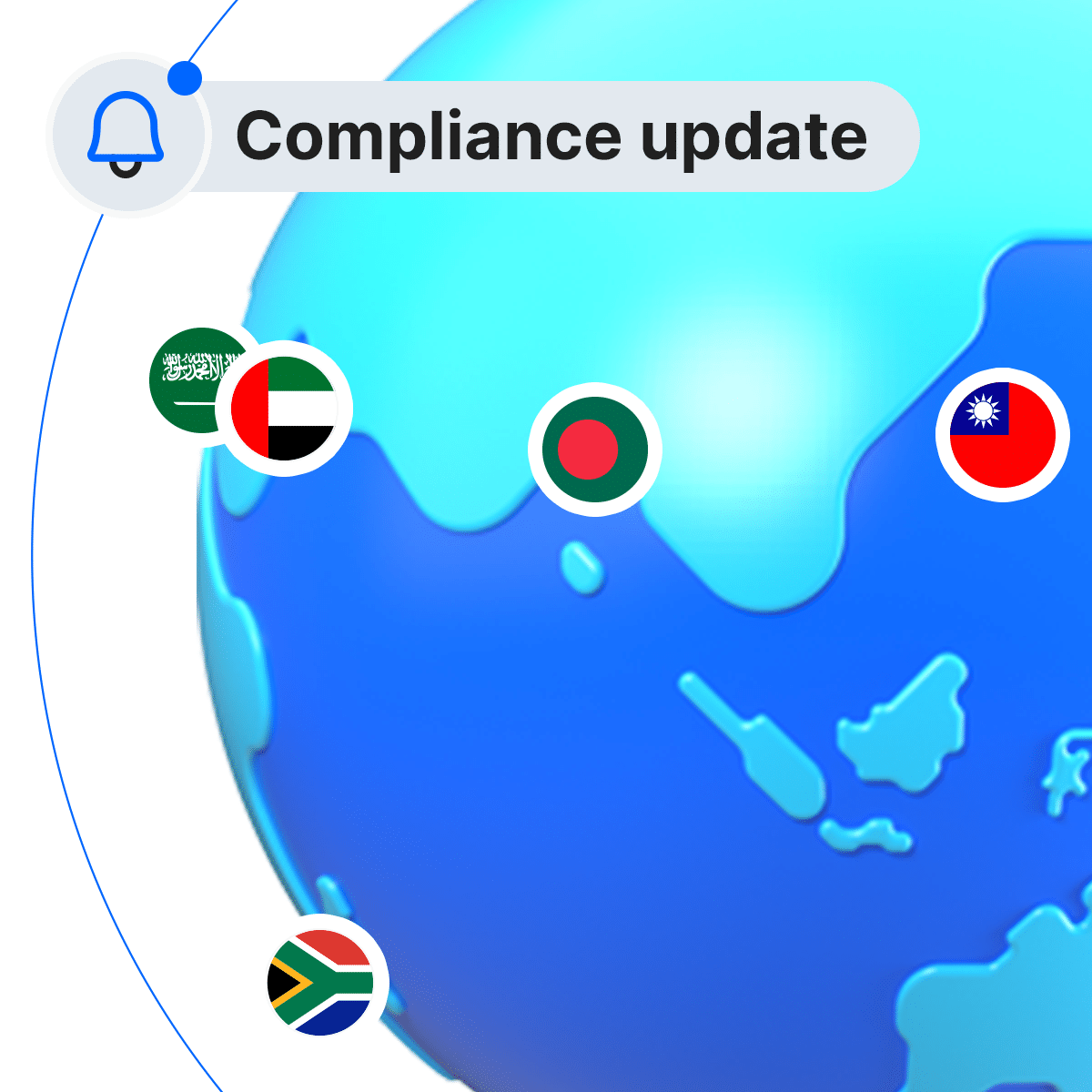The level of complexity involved in managing international payroll is rising all the time. Every single jurisdiction in which you operate has its own set of labor laws, tax laws and data protection requirements, all of which are liable to change, often in unexpected ways and at short notice.
According to Payroll Org, more than 36% of organizations now manage payrolls in 6 or more countries, with 7% operating across 51 or more territories. At this scale, staying ahead of payroll compliance requirements across all markets demands considerable focus and expertise.
But with the right approach, compliance can actually become a catalyst for positive change, driving operational agility, employee trust and transformation throughout your business. This is the first in a three-part series exploring how that can work for you in practice.
Global payroll compliance: the day-to-day reality
Whether you’re working in payroll, HR or finance, the daily grind of managing compliance across multiple territories can feel overwhelming. In fact, for many getting payroll compliance right down to the local level is the number 1 global payroll challenge. As an organization, you’ll collectively be dealing with:
- Expansion demands: covering the distinct employment and tax regulations in new territories, in addition to those of existing markets. In some cases, this includes covering implementation guidance released after rules come into force.
- Local expertise shortages: the vital cultural know-how that comes from payroll experts embedded in a particular country is highly sought-after. This expertise is essential, especially when legislation changes, but can be expensive and difficult to access across multiple markets simultaneously.
- Rigid deadlines: although payroll compliance timelines vary from one country to the next, they do tend to be very rigid, including for the processing of starters and leavers. There is rarely any opportunity to correct mistakes in subsequent payroll cycles.
- Connecting systems: with employment law and payroll processing more integrated than ever before, payroll teams are required to validate not only for data accuracy, but also for legal requirements. Any changes in payroll policy can therefore trigger potential compliance risks.
- Data privacy: keeping sensitive payroll data safe is a top priority, and laws such as GDPR mean that continuous monitoring, advanced systems and expert oversight are essential. At the same time, regulatory frameworks are constantly evolving, and the consequences of non-compliance are rising in severity.
- Technology adoption: tech like automation, AI and APIs can either be a help or a hindrance to compliance, depending on how well they’re implemented. At a time when technology and regulations are both advancing rapidly, these tools ideally need to solve compliance problems and vulnerabilities rather than create them.
Why compliance challenges can be your growth indicator
It might sound odd, but compliance pressure can sometimes be a nice problem to have, because it’s a sign of an organization that is maturing, expanding and growing. In fact, the complexity of your compliance landscape often mirrors the breadth of your global operations.
However, this doesn’t change the unavoidable fact that the impacts of non-compliance can be considerable and wide-ranging, across financial sanctions, operational disruption, workforce dissatisfaction and reputational damage. That’s why forming and executing the right response to your compliance challenges is business-critical.
Three pillars of transformation
From our experience, that approach should cover three key elements, that collectively come together to make payroll compliance a positive driving force:
Well-implemented technology
Automation can apply validation continually and consistently to eliminate human error points. AI-driven trend analysis, error detection and pattern recognition can support the work of skilled payroll teams, rather than replacing them. And real-time API-based data connections can simultaneously enable employee self-service, maintain data security, and bridge the compliance gaps that can emerge when data is only transferred periodically.
Centralized platforms
Using a unified payroll platform can enable strategic expansion through capabilities that simply aren’t possible when systems are fragmented. Data protection management can be made global and integrated with strategic compliance oversight, coordinated information access, and universal adherence to all relevant certifications.
A strong payroll partnership
The potential of both of the above is amplified when working with an experienced, expert global payroll partner. They will be able to connect you to in-country payroll experts with deep local knowledge of regulations, enforcement patterns and specific cultural nuances. Furthermore, they will help you implement a unified platform for all payroll and compliance data, with comprehensive information access, oversight and audit trails, and give you all the tech support you need across automated data validation, well-designed AI use and extensive API integrations.






